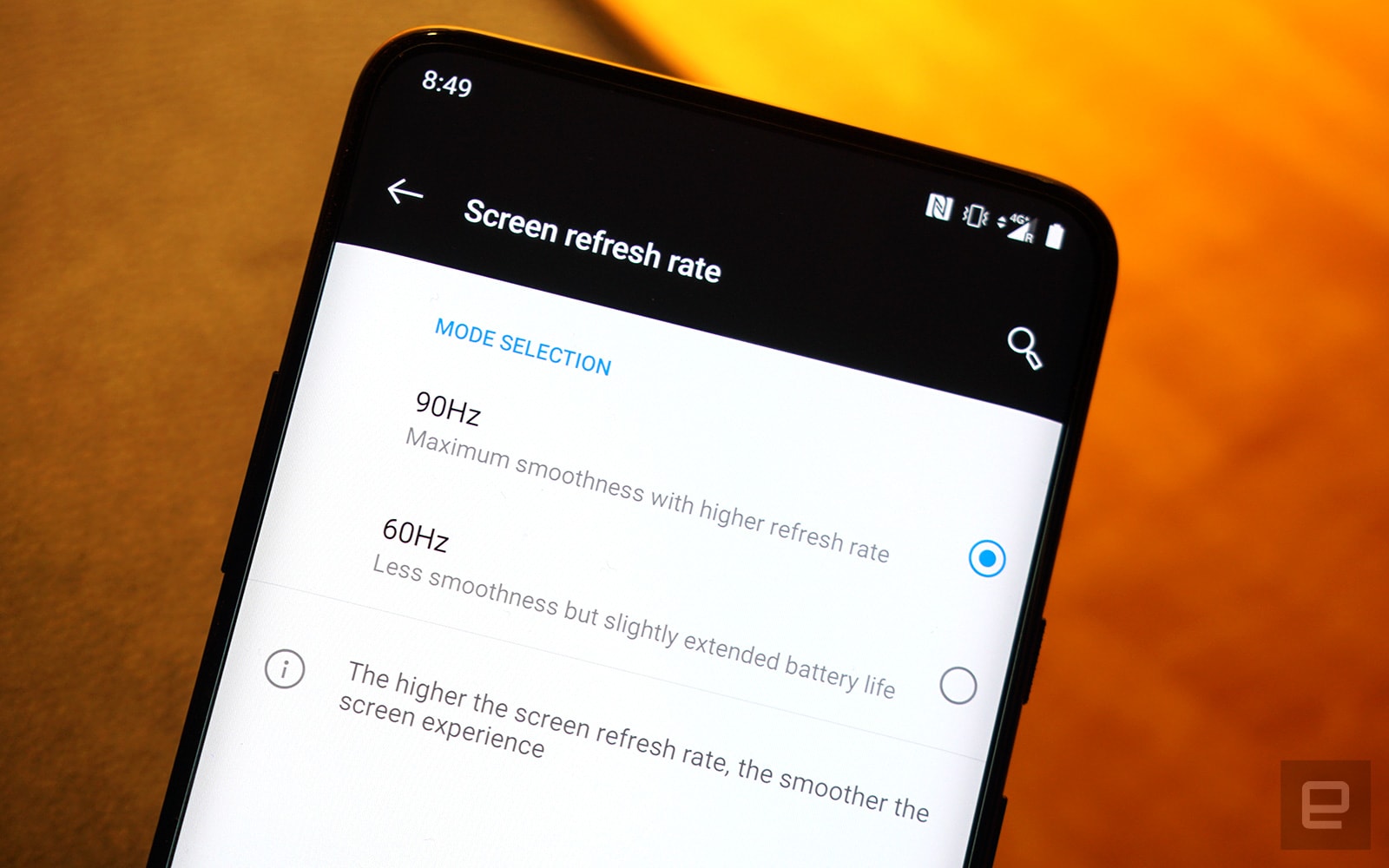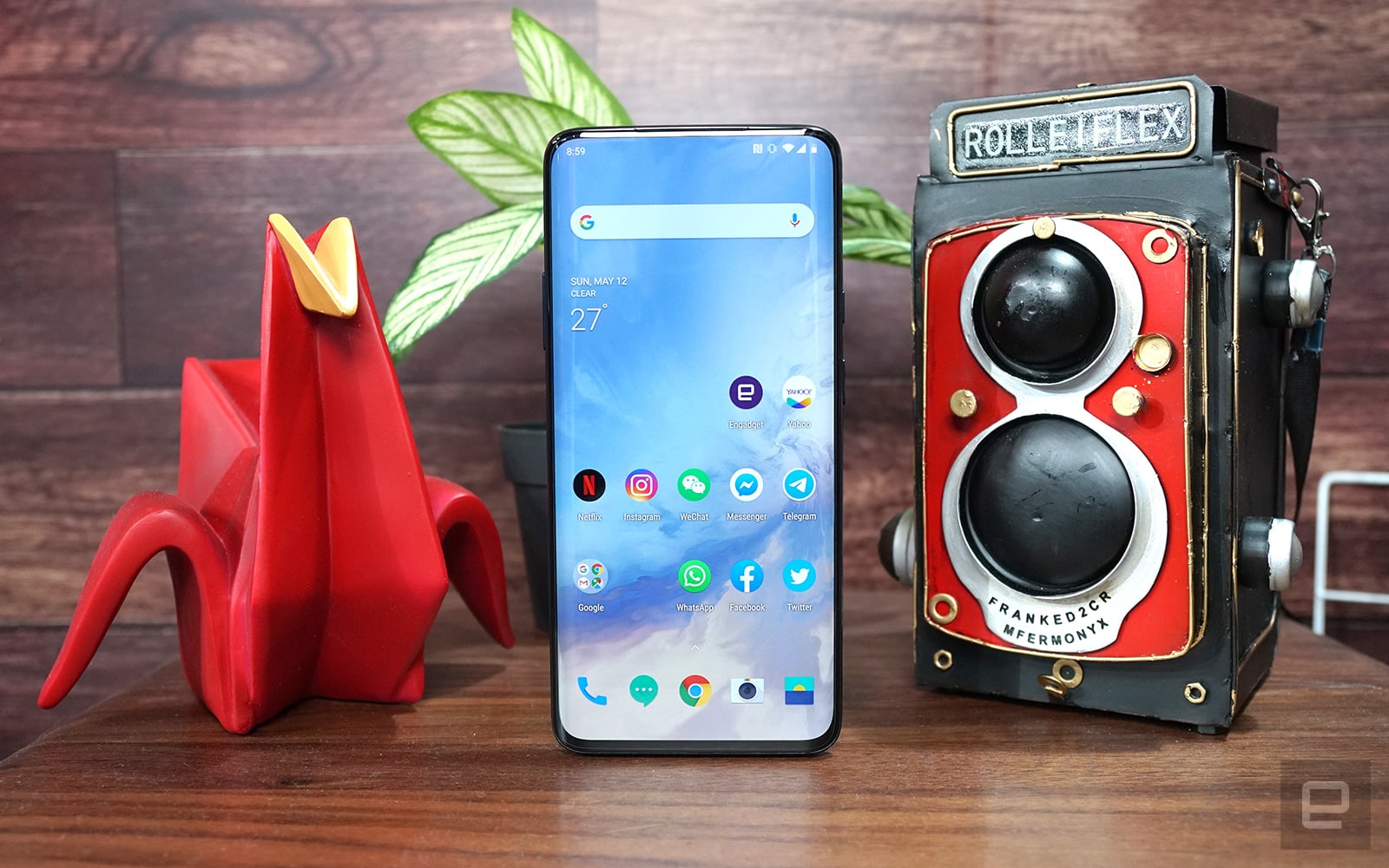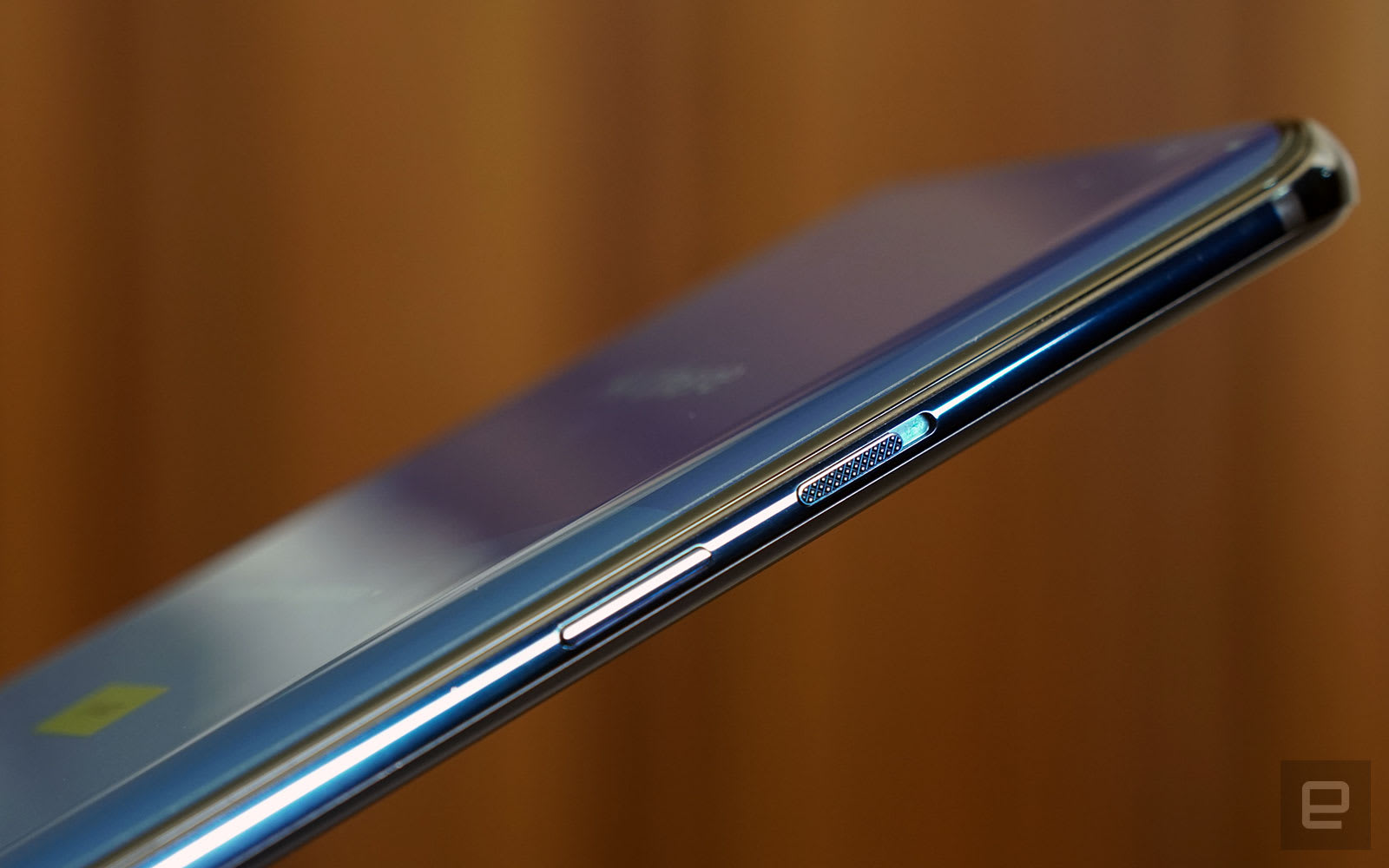[ad_1]
The main difference between the OnePlus 7 Pro and the 6T is that the notch camera has been replaced by a pop-up camera with a new 16-megapixel sensor, meaning OnePlus finally has a true all-screen smartphone. The pop-up mechanism has apparently been tested to withstand over 300,000 movements, which should last for well over five years of heavy use, even. Just to be safe, this camera is also able to retract automatically when the phone detects a fall. My only concern is how much dust — and potentially liquid — could get trapped in this compartment over time.
On the back, the OnePlus 7 Pro has a triple camera instead: There’s a 48-megapixel f/1.7 main camera (with optical stabilization), along with an 8-megapixel f/2.4 3x-zoom telephoto camera and a 16-megapixel f/2.2 ultra-wide camera. More on that later.
Another main selling point of the OnePlus 7 Pro is its Fluid AMOLED panel. With this, OnePlus is finally pushing into the QHD+ (3,120 x 1,440) resolution on a 6.67-inch curved screen (though the smaller 7 packs the same 6.41-inch 2,340 x 1,080 AMOLED screen as the 6T). The Fluid part refers to the screen’s 90Hz refresh rate, which makes everything you do look silky smooth — be it gaming, watching video or just general scrolling around.
Yes, we’ve already seen 90Hz AMOLED screens on niche devices like the ASUS ROG Phone and the Nubia Red Magic 3, but the OnePlus 7 Pro’s is the first to go beyond 1080p resolution. Once I got used to this, I felt odd whenever I switched back to older phones — they definitely felt laggy.
The OnePlus 7 Pro’s AMOLED screen supports HDR10+, which goes well with the surprisingly immersive Dolby Atmos stereo speakers. I’ll confess: This combination has improved my viewing experience so much that I’m catching up on HDR shows like Altered Carbon and Stranger Things on this phone.
As with earlier models, the OnePlus 7 Pro feels slick thanks to OnePlus’ excellent Oxygen OS (based on Android 9 Pie) — more so with the silky smooth Fluid AMOLED screen. The in-display fingerprint unlock is also much faster than before, and it beats the one on the Huawei P30 Pro.
I haven’t experienced any crashes or sudden resets on my OnePlus 7 Pro over the last week, and its 4,000mAh battery has usually lasted me for over 12 hours per charge with normal use — that’s included taking dozens of photos with the cameras, some Netflix streaming over WiFi and 4G and general browsing around Facebook and Twitter. Compared to the eight to 10 hours I got on my earlier phones, this is solid.
The OnePlus 7 Pro also comes with a 30W Warp Charge adapter, and it’s noticeably faster than its 20W predecessor — it takes just one hour to fully charge the phone, thus saving me about 25 minutes. Warp Charge is particularly useful when I need an emergency charge (like when I forget to charge my phone overnight; we’ve all been there) — an eight-minute charge can already get my dead phone up to 20 percent.
Despite this lightning-fast speed, the phone doesn’t heat up as much as you’d think, because Warp Charge (which is basically Oppo’s VOOC tech) is designed so most of the heavy lifting is handled by the charger. That said, the charger doesn’t get hot, either.
One personal pain point I had with the 6T was its weak haptic vibration — so weak that even without putting a case on the phone, I kept missing calls unless I was wearing a smartwatch. It’s unclear how many others complained about this, but it must have been a big enough issue to prompt OnePlus to fix this on the OnePlus 7 Pro. And so far, so good: I don’t think I’ve missed any calls yet thanks to the stronger vibration. As a bonus, this motor also offers crisper tactile feedback, which makes typing feel great. (Sadly, the OnePlus 7 doesn’t use this new vibration motor.)
So what is the OnePlus 7 Pro missing? As usual for OnePlus, there’s no microSD expansion, but you do get dual Nano SIM slots. There’s also no 3.5mm headphone jack nor a USB-C adapter in the box, but OnePlus does want you to consider buying its new Bullets Wireless 2 Bluetooth earphones. Unlike their predecessor, these new ones feature triple drivers — two balanced armature drivers and one moving coil on each side, and they sound great. At $99, it’s understandably much more expensive than the $69 OG earphones, but I think it’s still priced competitively given the audio performance. They also support Warp Charge, which offers 10 hours of listening time with just a 10-minute charge.
Source link
 Tech News code
Tech News code





